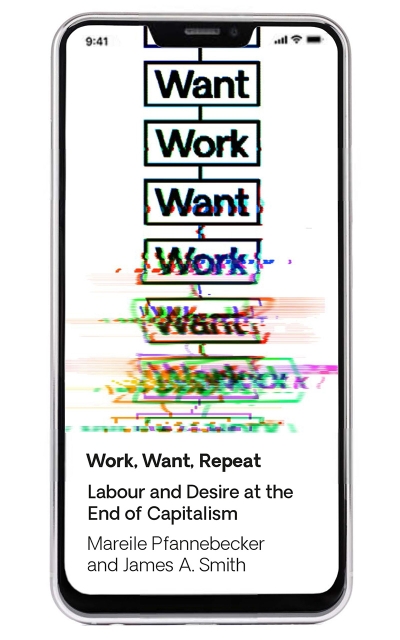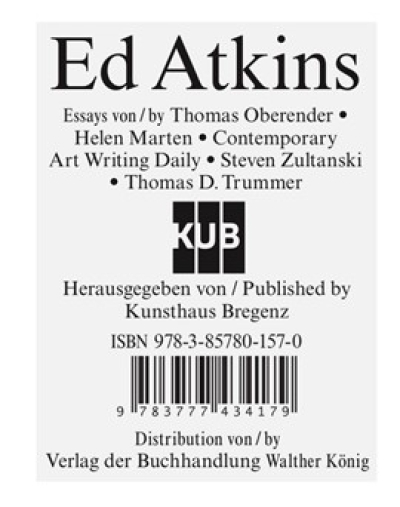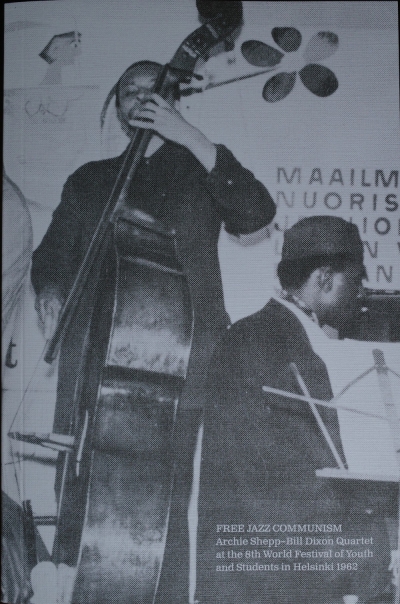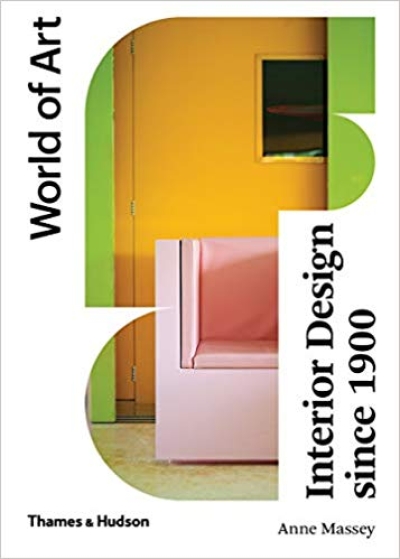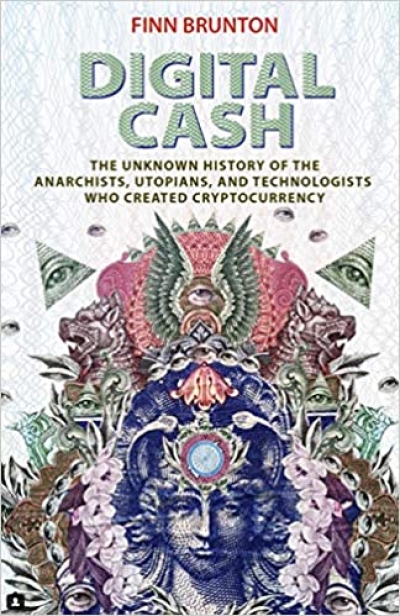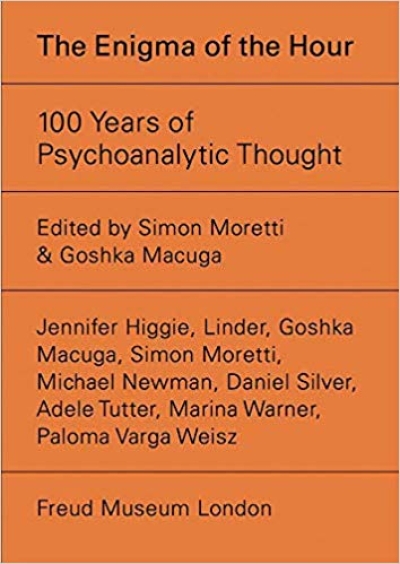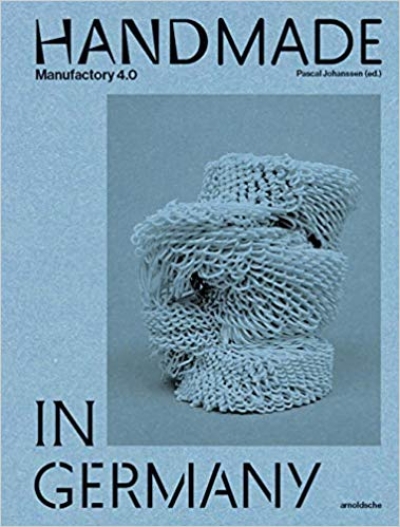Mona Chollet
Hexen. Die unbesiegte Macht der Frauen
Andrea Long Chu
Females. Everyone is female, and everyone hates it
Mareile Pfannebecker, James A. Smith
Work Want Work. Labour and Desire at the End of Capitalism
Matthew J. Wolf-Meyer
Theory for the World to Come. Speculative Fiction and…
Dan Byrne-Smith
Science Fiction
Will Schrimshaw
Immanence and Immersion. On the Acoustic Condition in…
Anette Baldauf
Spaces of Commoning: Artistic Research and the Utopia of…
Genesis Breyer P-Orridge, Carl…
Genesis Breyer P-Orridge. Sacred Intent. Conversations with…
Architecten De Vylder Vinck Taillieu
Variete / Architecture / Desire
F. Laranjo, L. Prado, P. Oliveira, ACED…
Modes of Criticism 5. Design Systems
Miodrag Kuc (Ed.)
Hacking Urban Furniture. HUF
Constantine Verevis
Flaming Creatures
Cornelius Cardew
Stockhausen Serves Imperialism
Rebecca Coleman
Glitterworlds. The Future Politics of a Ubiquitous Thing
McKenzie Wark
Reverse Cowgirl
Laura Kurgan, Dare Brawley (Ed.)
Ways of Knowing Cities
Jonathan Fardy
Althusser and Art
Thomas Piketty
Kapital und Ideologie
Claudia Blümle, Claudia Mareis,…
Visuelle Zeitgestaltung
Yanni Alexander Loukissas
All Data Are Local. Thinking Critically in a Data-Driven…
Eileen Myles
Chelsea Girls
Kunsthaus Bregenz
Ed Atkins
Daniel Martin Feige, Florian Arnold,…
Philosophie des Designs
Nancy Fraser, Rahel Jaeggi
Kapitalismus. Ein Gespräch über kritische Theorie
Silvia Federici
Beyond The Periphery Of The Skin. Rethinking, Remaking,…
João Carmo Simões
Gulbenkian. Photography by André Cepeda
Mateo Kries, Jochen Eisenbrand (Hg.)
Home Stories. 100 Jahre 20 visionäre Interieurs
Silvia Federici
Die Welt wieder verzaubern. Feminismus, Marxismus &…
Ilka and Andreas Ruby (Ed.)
The Materials Book
Daniela Comani
Planet Earth: 21st Century
Judith Butler
The Force of Non-Violence. An Ethico-Political Blind
Paul B. Preciado
An Apartment on Uranus
Fredi Fischli, Niels Olsen (Ed.)
Cloud '68 Paper Voice. Smiljan Radic's Collection…
Khayaat Fakier, Diana Mulinari, Nora…
Marxist-Feminist Theories and Struggles Today. Essential…
Kollektiv Quotidien
Lefebvre for Activists [dt./engl.]
Siegfried Zielinski
Variations on Media Thinking
Marcus White, Nano Langenheim
The Death of Urbanism. Transitions through the stages of…
Sezgin Boynik, Taneli Viitahuhta (Ed.)
Free Jazz Communism. Archie Shepp-Bill Dixon Quartet at the…
Clara Bouveresse
Women at Work / Femmes a l'oeuvre / Femmes a l'…
Anne Massey
Interior Design Since 1900 (World of Art)
Finn Brunton
Digital Cash: The Unknown History of the Anarchists,…
Andrea Bajani
The Barolo Chapel. The last eclipse of the millennium. The…
Joost Meuwissen
Zur Architektur des Wohnens
S. Gau, K. Schlieben (Hg)
Work to do!: Selbstorganisation in prekären…
Uliana Bychenkova, Nika Kudinova,…
Znak. Ukrainian Trademarks 1960 — 1980
Wolfgang Tillmans
Today Is The First Day
Mark Fisher
k-punk: Ausgewählte Schriften 2004-2016
Goshka Macuga, Simon Moretti
The Enigma of Hour. 100 Years of Psychoanalytic Thought
Owen Hopkins
Postmodern Architecture: Less is a Bore
Ray Lucas
Anthropology for Architects. Social Relations and the Built…
Michael Bull
Sirens. The Study of Sound
Dominik Bartmanski, Ian Woodward
Labels. Making Independent Music
Jens Hoffmann
In the Meantime: Speculations on Art, Curating, and…
Laure Prouvost
GDM: Grand Dad's Visitor Center
John Cage
Diary: How to Improve the World (You Will Only Make Matters…
Nina Canell & Robin Watkins (eds.)
Vegetable Teratology Colouring Book
Kumiko Inui
Inui Architects
U. Borinski, R.P. Gorbach
Lesbar: Typografie in der Wissensvermittlung
Claude Lefort
Dante's Modernity. An Introduction to The Monarchia
Sharon Lockhart
Pine Flat. (Afterall Series One Work)
Pascal Johanssom (Ed.)
Handmade in Germany: Manufaktur 4.0
Andreas Nentwich, Christine Schnapp
Modern in alle Ewigkeit: Eine Reise zu den schönsten…
David Reinfurt
A New Program for Graphic Design
Sophie J. Williamson (Ed.)
Translation (Documents of Contemporary Art)
Zamp Kelp
Luftschlosser: Ein Blick auf Haus-Rucker-Co / Post-Haus-…
M. Seidel, G. Steixner (Hg)
Society now! Architektur. Projekte und Positionen 2009 -…
Moisés Puente (Hg)
2G 80. Fala Atelier
Ocean Vuong
Night Sky With Exit Wounds
Viction Workshop (Ed.)
Botanical Inspiration: Nature in Art and Illustration
Florentine Nadolni (Hg.)
Alltag formen!: Bauhaus-Moderne in der DDR
Karl Gerstner
Designing Programmes: Programme as Typeface, Typography,…
Maarten Van Den Driessche (Ed.)
Robbrecht en Daem: An Architectural Anthology
C. Blanchfield, F. Lotfi-Jam
Modern Management Methods - Architecture, Historical Value…
Shirin Sabahi
Pocket Folklore
Heindl, Klein, Linortner (Eds)
Building Critique: Architecture and its Discontents
Alona Rodeh, Kunstpalais
The Third Dimension. A Journey from Past Reality to Future…
Rike Felka
Biomorphe Architekturen
Cooking Sections
The Empire Remains Shop
Alonso, Palmarola (eds.)
Flying Panels: How Concrete Panels Changed the World
Laura Sobral
Doing it Together. Cooperation Tools for the City Co-…
M. Hieslmair, M. Zinganel (Hg)
Stop and Go. Nodes of Transformation and Transition
Rike Frank, Beatrice von Bismarck
Of(f) Our Times: Curatorial Anachronics
Sara Ahmed
What's the Use? On the Uses of Use
Graham Harman
Art and Objects
Benjamin Bratton
The Terraforming
Michael Hieslmair, Michael Zinganel (…
Stop and Go. Nodes of Transformation and Transition
Ana Vujanovic, Livia Piazza (Ed.)
A Live Gathering: Performance and Politics in Contemporary…
edu-factory
Alle Macht der selbstorganisierten Wissensproduktion
Alona Rodeh
FIRE: Safe & Sound
Vision 5
Artists Photographs
Hilma Af Klint
Visionary
Allan Kaprow
How To Make A Happening CD
Ruth Sonderegger
Polyphone Ästhetik: Eine kritische Situierung
Philipp Oswalt
Marke Bauhaus 1919-2019: Der Sieg der ikonischen Form über…
Marie-Pier Boucher, Stefan Helmreich,…
Being Material
Tom Rice
Films for the Colonies. Cinema and the Preservation of the…
Jürgen Habermas
Auch eine Geschichte der Philosophie. Bd 1: Die okzidentale…
Constance DeJong, Andrew Lampert (Ed.)
Tony Conrad. Writings



